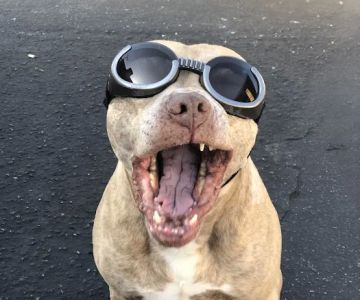Understanding Hot Spots in Pets: What Every Pet Owner Should Know
As a pet owner, I’ve seen firsthand how frustrating it can be to watch your beloved furry friend suffer from hot spots. These painful, inflamed areas on the skin can be a constant source of discomfort for your pet, often leading to scratching, licking, and even hair loss. If you're wondering how to prevent and treat hot spots, you’re not alone. In this article, I'll walk you through everything you need to know to keep your pet healthy, happy, and free from the agony of hot spots.

1225 Warren Ave, Downers Grove, IL 60515, USA
See DetailsWhat Exactly Are Hot Spots?
Hot spots, also known as acute moist dermatitis, are areas of skin inflammation that occur when your pet’s skin becomes infected and irritated. These lesions are usually red, raw, and painful, and they can appear quickly, often overnight. Hot spots are most commonly found on dogs, but cats can suffer from them as well. The affected area is typically moist, and the skin may have a foul odor. Hot spots are often the result of excessive licking, chewing, or scratching, which creates the perfect environment for bacteria to thrive.
Causes of Hot Spots in Pets
The causes of hot spots can vary, but most of the time, they stem from allergies, parasites, or poor grooming habits. Here are the most common culprits:
- Allergies: Many pets suffer from allergies, whether to food, pollen, or environmental factors. Allergic reactions can cause your pet to scratch or lick at their skin, leading to hot spots.
- Fleas and Ticks: Fleas are a major cause of itching and irritation, which can quickly escalate into hot spots if not treated. Even a few flea bites can cause intense discomfort for your pet.
- Infections: Bacterial or fungal infections can develop when a pet’s skin is damaged due to excessive licking or scratching. This can result in hot spots.
- Poor Grooming: Matted fur or a buildup of dirt can trap moisture against your pet's skin, creating the perfect breeding ground for bacteria and leading to hot spots.
- Underlying Medical Conditions: Sometimes, hot spots are a sign of an underlying medical issue, such as a thyroid problem, skin infection, or autoimmune disorder. It’s always important to consult a veterinarian if you suspect a deeper health concern.
How to Prevent Hot Spots in Pets
Prevention is always better than treatment, and there are several steps you can take to keep your pet safe from the discomfort of hot spots. Based on my experience and advice from experts, here’s how you can help:
- Regular Grooming: Keep your pet clean and well-groomed. Regular brushing helps remove dirt and debris from the fur, which can prevent mats and tangles. Bathing your pet with a gentle, pet-safe shampoo can also help keep their skin healthy.
- Flea and Tick Control: Make sure you are using an effective flea and tick prevention method for your pet. Fleas are a leading cause of skin irritation, so it’s essential to keep them under control with monthly treatments or preventative collars.
- Allergy Management: If your pet suffers from allergies, work with your vet to find the right solution. This might include a change in diet, antihistamines, or other treatments to reduce itching and inflammation.
- Keep Your Pet Dry: Moisture can make hot spots worse, so ensure that your pet’s coat stays dry, especially after baths or being outside in the rain. Dry their fur thoroughly to prevent irritation.
- Limit Licking and Scratching: If your pet is prone to licking or scratching excessively, try using an Elizabethan collar or other protective gear to prevent them from irritating the area further.
How to Treat Hot Spots in Pets
Even with the best preventative care, hot spots can still occur. If you spot a hot spot on your pet, it's important to act quickly to relieve their discomfort and prevent the problem from worsening. Here’s what I’ve learned works best when treating hot spots:
- Clean the Area: Gently clean the affected area with a mild antiseptic solution. Avoid using harsh chemicals or alcohol, as these can irritate the skin further. Use a clean cloth or cotton ball to carefully wipe away any debris or discharge.
- Trim the Fur: If the hot spot is covered by fur, carefully trim the surrounding hair to allow air to reach the affected area. Be careful not to cut the skin or cause further injury.
- Apply a Treatment: There are many over-the-counter treatments for hot spots, including sprays, creams, and ointments. Look for products with soothing ingredients like hydrocortisone or aloe vera to reduce inflammation and promote healing.
- Visit the Vet: If the hot spot doesn’t improve or appears to be spreading, it’s important to consult a veterinarian. In some cases, your pet may need a prescription medication, such as antibiotics or corticosteroids, to treat the infection and relieve pain.
- Prevent Licking and Scratching: One of the biggest challenges with hot spots is preventing your pet from licking or scratching the affected area. An Elizabethan collar or protective shirt can help keep your pet from making the condition worse.
Real-Life Story: My Dog’s Battle with Hot Spots
Not long ago, my dog Max started scratching incessantly. At first, I thought it was just a mild irritation, but within a couple of days, a hot spot appeared on his back. I immediately recognized the signs—red, swollen skin, and a bad smell. As a responsible pet owner, I knew that I needed to act quickly.
First, I cleaned the area carefully with a pet-safe antiseptic. Then, I applied a topical treatment to soothe the pain. I also made sure Max couldn’t reach the hot spot by using an Elizabethan collar. Over the next few days, I noticed a huge improvement. By the time I visited my vet, the hot spot was healing nicely. Max’s experience taught me just how important it is to be vigilant when it comes to skin health, and it’s something I’ll always watch for from now on.
Conclusion: Keeping Your Pet Happy and Healthy
Hot spots are a common yet serious skin issue that can cause your pet discomfort and distress. However, with the right preventive care and prompt treatment, most hot spots can be managed and healed. Regular grooming, flea control, and allergy management are all key to keeping your pet’s skin healthy. And if hot spots do appear, remember to treat them quickly and consult your vet if necessary. A happy, healthy pet is a well-cared-for pet!
If you’re looking for professional help, don't hesitate to visit a trusted vet like Hidden Brook Veterinary for more information on treating your pet’s skin conditions or for personalized pet care advice.










